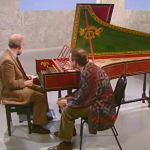
Sonia Boué and Ashokkumar D Mistry: Las Gemelas: Arrival (a lexicon of unmaking)
John Hansard Gallery
Age suitable for:
- 16+ only
On 23 May 1937, the SS Habana docked in Southampton with almost 4,000 Basque child refugees on board. The Special Collections at the University of Southampton now holds archives relating to this event, the biggest single influx of refugees in British history. The British government pursued a policy of 'neutrality' regarding the Spanish Civil War, but as the children took flight from the aerial bombardments of fascist forces in Spain the people of Southampton improvised their shelter. The children were subsequently billeted in colonies throughout the UK until it was deemed safe to return, though this was uncertain. Over two hundred Basque children settled permanently and lived out their adult lives on these shores. The archives represent material memory and can be experienced as a family collection -- a deeply personal account of history, while also being a communal record.
Las Gemelas (The Twins), the creative duo Sonia Boué and Ashokkumar D Mistry, have different relations to these archives: Boué's father was himself a political exile from the Spanish Civil War, while Mistry's family fled the tumult of the waning days of Empire. Sharing a heritage of forced migration, their collaboration has produced a series of contrasting parallel responses. Mistry unpicks preconceptions of history and storytelling with a multi-sensory promenade of experiences, while Boué seeks to mediate the exile experience by enacting a vigil of making. Concerned with human and historical dislocations, the duo present their lexicon of unmaking.
Las Gemelas (The Twins), the creative duo Sonia Boué and Ashokkumar D Mistry, have different relations to these archives: Boué's father was himself a political exile from the Spanish Civil War, while Mistry's family fled the tumult of the waning days of Empire. Sharing a heritage of forced migration, their collaboration has produced a series of contrasting parallel responses. Mistry unpicks preconceptions of history and storytelling with a multi-sensory promenade of experiences, while Boué seeks to mediate the exile experience by enacting a vigil of making. Concerned with human and historical dislocations, the duo present their lexicon of unmaking.
You may also like

The Real Thing? (BBC2 1990)
You are invited to the first re-showing of a 90-minute survey of the aesthetic questions raised by the CD-fuelled Early Music boom of the 1980s; described by the Daily Telegraph as ...Read More
Turner Sims

The Many Ways To Be A Mother | Workshop
Some mothers see their motherhood as deeply connected to things they do with their body, where both the body and what it does are experienced as female. Trans-inclusivity may be ex ...Read More
John Hansard Gallery

